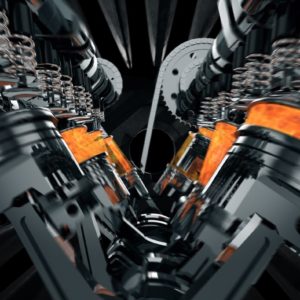If you’ve got a P0300 on your hands, buckle up—you might be in for a complicated diagnostic and repair process. In terms of severity, this OBD-II code is critical and will likely require the assistance of an automotive professional.
What Does P0300 Mean?
Code P0300 stands for “Random or Multiple Cylinder Misfire Detected.” This diagnostic trouble code (DTC) indicates that your car’s computer has detected an engine misfire that’s random and/or appearing on multiple cylinders. You’ll likely find another OBD-II code—from P0301 to P0308—alongside P0300 as these all point to engine misfires.
The last number in these accompanying codes refers to the affected cylinder. A P0302, for example, indicates a misfire on a particular cylinder (in this example, cylinder 2).
Cylinder number 2 would refer, not to the second cylinder in the firing order, but the cylinder numbered “2” in the arrangement of cylinders on the engine. For example, on a Ford V8, the cylinders are numbered 1 to 4 on the passenger side bank and 5-8 on the driver side bank. On a Chevy or Dodge V8, the cylinders are numbered 1-3-5-7 on the driver side bank and 2-4-6-8 on the passenger side bank. Four cylinder inline engines are numbered 1-2-3-4 beginning on the timing belt end of the engine. This information is important, but has little to do with a P0300, which doesn’t specify a particular cylinder.

You should never ignore engine code P0300 because misfires can result in very expensive repair costs. There are many things that could cause misfires and finding out the root of the problem can be a real challenge. If you’re not equipped with the technical knowledge to properly address the issue, it’s best to take your car to a mechanic rather than trying to fix it yourself.
What are the Possible Causes of the P0300 Code?
There are many possible causes of a P0300 trouble code:
- Ignition system problems (e.g. a bad distributor or worn spark plugs)
- Fuel delivery issues (e.g. a weak fuel pump or clogged fuel injectors)
- Engine mechanical problems (e.g. a failed head gasket or loose timing chain)
- Sensor issues (e.g. a bad mass airflow sensor or crankshaft sensor)
- Wiring problems (e.g. a broken wire or lose connector)
- Emissions equipment issues (e.g. a bad exhaust gas recirculation valve or secondary air injection system failure)
- Computer problems (e.g. software in need of an update or faulty hardware)
- Vacuum leaks (e.g. a damaged vacuum hose or a leaking intake manifold gasket)
The causes can vary depending on the vehicle. For example, P0300 Chevrolet Equinox cases might happen because of a leaky high-pressure oil pump. Issues like too much carbon buildup on the engine valves, excessive sludge in the engine block, and blockage in the intake manifold’s PCV opening can trigger it as well.
What are the Common Symptoms of the P0300 Code?
You may experience one or more of the following symptoms if your vehicle has trouble code P0300:
- Check engine light is illuminated—in some vehicles, a blinking check engine light indicates a misfire that’s severe enough to damage the catalytic converter
- Engine performance problems such as hesitation and lack of acceleration
- Hard starting and extended cranking
- Shaking and jerking as your engine stutters
- Reduced fuel economy
- A failed emissions test
How to Diagnose the P0300 Code
P0300 must not be ignored. You’ll have to look at all possible causes to diagnose the problem properly. Have a professional mechanic check your vehicle if you don’t have the required DIY auto repair experience and skills. But if you still want to take a crack at diagnosing the problem, the videos below should give you more useful instruction.
How to Fix the P0300 Code
Disclaimer: Due to the wide variability in vehicle makes and models, as well as other factors, the following information must not be construed as complete or the only definitive way to address a particular issue. Instead, the following content merely attempts to give you a better idea of what a do-it-yourself approach to the issue might involve. You are encouraged to find more technical resources regarding the subject or take your vehicle to a professional technician for the best results.
Before working on your vehicle, it’s a good idea to check for any technical service bulletins (TSB) or recalls that cover the P0300 trouble code.
Technical service bulletins are announcements and information from the vehicle manufacturer about a common cause of specific issues. These either define an issue as normal operation or might include the necessary steps and parts needed to resolve it, including part numbers if an upgraded part is needed to resolve the issue.
TSBs are mostly intended for technicians and authorized dealerships, but many aftermarket companies also republish these announcements for public consumption.
TSBs are published to provide useful repair information not included in the shop manual. However, unless the concern happens within the OEM warranty period, the customer will be charged for the repair. Recalls, on the other hand, are for the life of the vehicle but can only be performed once.
There are also programs covering a specific issue certain vehicles might have that are covered under warranty until a certain time and/or mileage.
But if there are no TSBs about your vehicle and the P0300 code, here are the steps you can follow to fix the issue if you have a good scan tool. Note that a simple code reader won’t work for this particular fix.
1. Retrieve any diagnostic trouble codes (DTCs) and record them, then access the freeze frame data for the P0300 code if there is freeze frame data stored. Each stored code will typically have its own freeze frame data, but not all scan tools will provide access to the freeze frame. Record the Freeze Frame Data for all the codes stored, then erase the DTC and freeze frame data.
2. Start the engine and let it idle or operate within the conditions listed in the freeze frame or failure records.
3. Monitor all misfire counters using the scan tool and check if these misfires are incrementing. Record which cylinders have the most misfires. Focus on those.
4. Check the scan tool if the voltage parameters of the oxygen sensors are below the specified value. Remember: the O2 sensors are detecting oxygen, not fuel, so even if a spark plug is misfiring and there is fuel in the exhaust along with unburned O2, the O2 will drive the sensor to signal a lean mix.
5. If the values are fixed, you can proceed to inspect the following:
- Splits, restrictions, and improper connections in the vacuum hoses and seals
- Vacuum leaks in the throttle body and intake manifold
- Vacuum leaks in the crankcase ventilation
- Corrosion and loose connections in the PCM
- Restrictions in the exhaust system
- Contamination in the fuel
6. If there are no issues with the parts mentioned above, turn off the ignition and disconnect the spark plug wire from the spark plug that corresponds to the misfire current counters and install the spark tester.
7. If the spark jumps the tester gap, remove the spark plug wire of the affected cylinders and use a digital multimeter to check for resistance.
8. If the resistance is outside the specified value, replace the spark plug and check if the check engine light is still flashing.
9. If the resistance is within the specified range, remove the spark plug from the misfiring cylinder, and exchange it with another cylinder.
10. If the misfire moved with the spark plug, you can proceed with its replacement. Otherwise, proceed to conduct a fuel injector solenoid coil test and see if there are any underlying conditions within the system.
11. Once the conditions have been corrected, clear the DTC with a scan tool and turn off the ignition for at least 30 seconds.

Safety Reminders
Attempting to fix a P0300 without the right tools and information can lead to further complications, so make sure to have everything you need before proceeding.
Also keep in mind that the procedure mentioned above might include additional steps, depending on your vehicle’s year, make, and model.
If your owner’s manual doesn’t have the steps to resolve this trouble code, you can check guides like those from Chilton, or get an ALLDATA subscription to get vehicle-specific repair information.
Other Notes About P0300
As mentioned, engine misfire, whether an isolated incident or not, is a fairly common issue. Don’t be surprised if you have a Chevy with a P0300 code because it can appear in popular makes including Nissan, Ford, Dodge, and Toyota.
The most advisable thing to do is to take your car to an auto repair shop to have it checked immediately. Driving with an unresolved P0300 code will almost surely lead to bad fuel economy and more money paid at the pump, not to mention the astronomical repair costs of a severely damaged engine if misfires end up causing more serious problems.
Frequently Asked Questions
Can a bad catalytic converter cause a P0300 code?
Although rather uncommon, a faulty catalytic converter can cause code P0300 to set. If the catalytic converter becomes restricted, it can create enough back pressure to cause a misfire and trigger code P0300.
Can a bad O2 sensor cause a P0300 code?
Because the oxygen sensor is one of the primary inputs to your car’s computer for fuel control, a failure of the sensor can lead to an improper air/fuel ratio, which can cause an engine misfire that triggers code P0300. Keep in mind, however, that a faulty oxygen sensor is just one of many potential causes for the code.
What is P0300 code on Silverado 2001?
Code P0300 is a generic OBD code with a standard definition from the Society of Automotive Engineers (SAE). SAE refers to the code as “Random Misfire Detected.” But on many Chevy vehicles, when using an OEM-level scan tool, the code may come up as “Multiple Cylinder Misfire Detected.”
In either scenario, the code indicates your car’s onboard computer perceives an engine misfire on multiple cylinders.
An In-Depth Look at Cylinder Misfires
How does the engine computer know which cylinder is misfiring anyway? Well, it works like this:
To begin with, the PCM (engine computer) has to establish a baseline of how the crankshaft position sensor pulses are spaced. This baseline snapshot is something the PCM learns and stores on its own, usually during deceleration when the injectors are turned off and the engine is being driven by vehicle momentum through the transmission (coasting), because none of the cylinders are contributing power at that point. Without this information stored, the PCM cannot detect misfires. Technicians will use scan tool software to make the PCM learn this faster after they replace certain components or erase the PCM’s memory.
This baseline “snapshot” has different names among manufacturers. Chrysler refers to this piece of stored information as the “Adaptive Numerator.” GM and Ford refer to it as “Crank Relearn” or “Case Relearn.” One way or another, the PCM compares the live crankshaft pulses with the pattern it stored during the Crankshaft Learning process. But the PCM typically updates this information periodically on its own as a part of the “adaptive learning” process PCMs use.
The point of the “Crankshaft Learn” snapshot is that the PCM needs to know when the engine is misfiring, i.e., which cylinder isn’t contributing, and it can tell by watching the crankshaft slow down every time a particular cylinder doesn’t fire. It determines that by comparing the stored pattern with the live one. But there’s another factor the PCM uses. Keep reading.
Each piston travels up and down four times in a cycle, but each one only generates power on one of its four strokes, and the crankshaft is able to maintain an even speed because every cylinder is contributing evenly its share when the engine is loaded. Again, if a cylinder isn’t producing power, the crankshaft will very briefly slow down when it’s that cylinder’s turn to fire.
So, the crankshaft makes two full turns to complete a cycle and the camshaft only makes one full turn during a cycle because it spins at half crankshaft speed. For that reason, the PCM uses the Camshaft Position Sensor to identify which cylinder should be firing when the crankshaft slows down.

The PCM measures how often a misfire happens within two different rpm windows to determine the frequency/severity of a misfire. It stores misfires within a 200 rpm window of time and also within a 1000 rpm window of time. Obviously, a misfire that happens multiple times with a 200 rpm window is the most serious.
An occasional misfire (like a “bite” under acceleration) won’t even set a P030x code unless it happens more than a certain number of times within the 1000 rpm window. Infrequent misfires are recorded but not tied to a particular cylinder, and on some platforms, this stores a P0300.
An occasional misfire (like a “bite” under acceleration) won’t even set a P030x code unless it happens more than a certain number of times within the 1000 rpm window. Infrequent misfires are recorded but not tied to a particular cylinder, and on some platforms, this stores a P0300.
–Richard McCuistian, ASE Certified Master Automobile Technician
Typically, any situation that isn’t tied to a particular cylinder but is causing misfires on several different cylinders is suspect. Fuel contamination would be one possibility. More are listed below in the “Possible Causes” section.
Fix Misfires and a P0300 Code With the Right Engine Parts
When the P0300 code is triggered, your engine is also likely misfiring. Don’t let misfires ruin your engine and replace faulty components before they lead to costly engine damage. Good thing CarParts.com can supply you with the parts you need to restore your engine.
You don’t need to search multiple brick-and-mortar stores or websites to find the right spark plugs, fuel injectors, or mass air flow sensors. Simply enter your vehicle’s year, make, and model in our vehicle selector to see compatible parts from leading aftermarket brands.
CarParts.com has competitive pricing, so you can get necessary engine parts without breaking the bank. And since our warehouses are strategically located nationwide, you can receive your order in no time.
Don’t let faulty engine components lead to more severe engine damage. Browse our selection of high-quality spark plugs, fuel injectors, and mass air flow sensors here at CarParts.com and order today!
Products Mentioned in this Guide
Any information provided on this Website is for informational purposes only and is not intended to replace consultation with a professional mechanic. The accuracy and timeliness of the information may change from the time of publication.




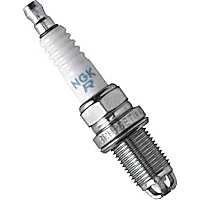 Spark Plug
Spark Plug
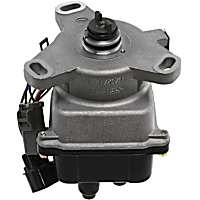 Distributor
Distributor
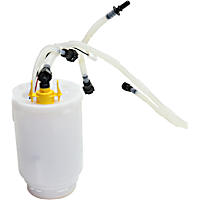 Fuel Pump
Fuel Pump
 Fuel Injector
Fuel Injector
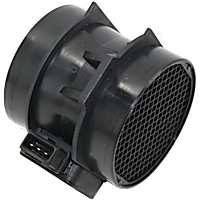 Mass Air Flow Sensor
Mass Air Flow Sensor
 Intake Manifold Gasket
Intake Manifold Gasket



